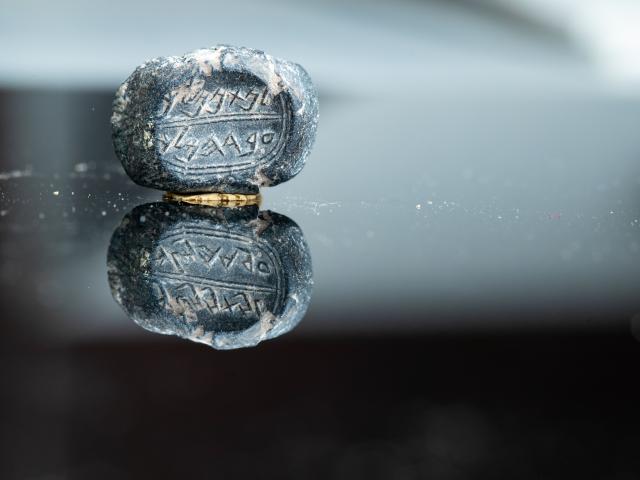‘The Beating Heart of Jerusalem’: Newly Discovered Pilgrimage Road Gives Glimpse into Life During Jesus’ Time



07-09-2019
CBN News Julie Stahl
In ancient Israel, the Jewish people obeyed the biblical commandment to travel to Jerusalem three times a year for a temple sacrifice – at Passover, Shavuot (Pentecost), and Succoth (Feast of Tabernacles) Now for the first time in 2,000 years, the road they walked is being uncovered for all to see.
“The places and events and peoples that make Jerusalem, Jerusalem for Christians, for Jews, it all happened here. It happened here in the City of David,” said Zeev Orenstein, Director of International Affairs at the City of David Foundation.
Photo Courtesy: Shalom Kweller, City of David Archives
“This is where the beating heart of Jerusalem is. We’re talking about the Pool of Siloam, we’re talking about Mt. Moriah, the Temple Mount. We’re talking about the City of David. The Pilgrimage Road links them all together,” Orenstein told CBN News.
For Jews in ancient days, their pilgrimage began at the Pool of Siloam, a giant mikveh, or ritual bath. The size of two Olympic swimming pools, they would purify themselves here before going up to the Temple to offer their sacrifices.
“The historian Josephus says, 2,000 years ago, on the pilgrimage festivals, there would have been more than 2 million people going up on pilgrimage. That’s a lot of people that need to bathe,” Orenstein explained.
The pool is also where Jesus healed the blind man as recounted in the book of John. Its location was hidden by a road until fifteen years ago when a sewage leak led to excavations, the discovery of the pool and much more.
“The archaeologists when they find the pool of Siloam, they understand that that’s the pool and they know where the Temple stood on the Temple Mount 2,000 years ago, the same Temple Mount as today,” Orenstein said.
Orenstein said then archaeologists wondered how the pilgrims traveled from the pool to the Temple Mount.
“So the archaeologists widen the excavation,” he explained and that is now what they’re calling the ancient Pilgrimage Road.
The stones are that Jesus would have walked on, on his way up to the Temple. The significance of the excavation of the Pilgrimage Road is that for the first time in 2,000 years, visitors will be able to walk all the way from the Pool of Siloam up to the Western Wall.
“The word in the Bible, the Hebrew word is Aliyah b’regel, oleh regel. Now what we understand that to mean is that it’s a spiritual ascent, going up to Jerusalem, going up to the Temple. It’s a very holy place,” Orenstein explained. “But, when you’re in the place where the Bible happened, the words of the Bible come to life,” he said pointing out that the road actually goes uphill.
And it was more than that.
“This would have been a Times Square. We would have had on both sides of the road, keep in mind the road is about three, four or five times wider than what we see. You would have had shops, stalls along both sides of the road. This is the center of Jerusalem from a spiritual perspective, from a communal perspective, also from a commerce perspective,” he said.
According to the Israel Antiquities Authority, the road took ten years to build from 20-30 AD and was constructed by the Roman Governor Pontius Pilate.
“Now, one of the major issues of Jerusalem is that it’s a living city. All the archaeological layers are built on top of one another and the modern quarters and everything (is) built on top of the archaeological layers,” said IAA Excavation Manager Ari Levy.
Although the ancient road was out in the open 2,000 years ago, it’s currently underground, beneath the Jerusalem Arab neighborhood of Silwan. So walking on the road is like being in a tunnel. Levy says uncovering the road is a major engineering feat.
“We have a modern neighborhood just above our heads and we don’t want it to collapse,” Levy told CBN News. “After each meter that we take out, each meter of soil, we (put in) an arch-like construction. This supports the entire weight of what we have above us.”
Along the route, you can see many places where the road remains intact and others where it’s destroyed given its violent history.
“We know that the Romans they destroyed Jerusalem and if you were to find everything intact it wouldn’t seem like much of a destruction,” Orenstein said.
Among the discovered treasures are small coins minted during the Great (Jewish) Revolt before the Romans destroyed the Temple and Jerusalem in 70 AD.
Scholars often wonder why the Jews made worthless coins instead of weapons. Orenstein has an answer.
“The Jews of Jerusalem understood that the Romans were likely going to destroy the city. But they also believed that one day in the future, descendants would return and find these coins and they would know what their ancestors lived and died for – for a free Jerusalem.
“And here we are nearly 2,000 years later, standing along the very same Pilgrimage Road here in the City of David in Jerusalem – the capital of the Jewish State of Israel,” he said.
Half of the Pilgrimage Road will open soon to the public and within a few years, all the way from the Pool of Siloam to the Western Wall. That will give visitors a firsthand experience of what it was like to worship God in the time of Jesus.


